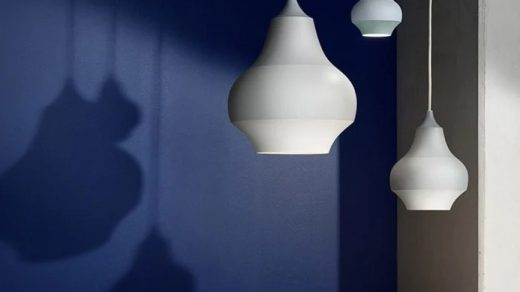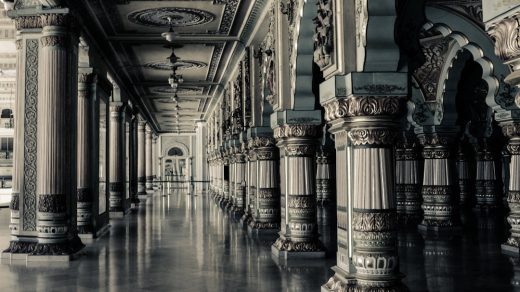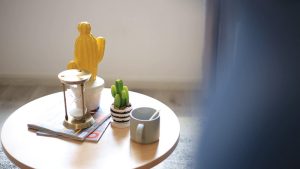When it comes to choosing the right style of lamp for your home, there are a few factors to consider. First, think about the overall aesthetic of your space. If you have a modern, minimalist style, you may want to opt for a sleek, contemporary lamp with clean lines and a simple design. On the other hand, if your home has a more traditional or eclectic feel, you might prefer a lamp with ornate details or a vintage-inspired look.
Another important consideration is the function of the lamp. Are you looking for a reading light for your bedside table, a statement piece for your living room, or a task light for your home office? The intended use of the lamp will help guide your decision when it comes to style. For example, a swing-arm floor lamp might be perfect for providing focused task lighting in a reading nook, while a decorative table lamp could add a touch of elegance to a sideboard or console table.
Ultimately, the style of Uselu lamp you choose should complement the existing decor in your home while also serving its intended purpose. Whether you prefer a sleek and modern design or something more traditional and ornate, there are countless options available to suit your personal taste and the specific needs of your space.
When it comes to selecting the right style of lamp for your home, there are several factors to consider. First and foremost, think about the overall aesthetic of your space. If you have a modern, minimalist style, you may want to opt for a sleek, contemporary lamp with clean lines and a simple design. On the other hand, if your home has a more traditional or eclectic feel, you might prefer a lamp with ornate details or a vintage-inspired look.
Another important consideration is the function of the lamp. Are you looking for a reading light for your bedside table, a statement piece for your living room, or a task light for your home office? The intended use of the lamp will help guide your decision when it comes to style. For example, a swing-arm floor lamp might be perfect for providing focused task lighting in a reading nook, while a decorative table lamp could add a touch of elegance to a sideboard or console table.
Ultimately, the style of lamp you choose should complement the existing decor in your home while also serving its intended purpose. Whether you prefer a sleek and modern design or something more traditional and ornate, there are countless options available to suit your personal taste and the specific needs of your space.
Finding the Perfect Size
When it comes to finding the perfect size lamp for your space, it’s important to consider both the height and the scale of the lamp in relation to the surrounding furniture. For example, if you’re looking for a table lamp for your bedside table, you’ll want to choose one that is proportionate to the size of the table and the height of your bed. A general rule of thumb is that the bottom of the lampshade should be around eye level when you’re sitting or lying down.
In addition to height, consider the overall scale of the lamp in relation to the furniture and decor in the room. A tiny lamp on a large sideboard might get lost in the space, while an oversized floor lamp in a small room could overwhelm the area. Take measurements and consider the visual weight of the lamp when making your decision.
Another factor to keep in mind is the scale of the lampshade. A too-small shade can make even a large lamp look out of proportion, while a too-large shade can overpower a smaller lamp. The goal is to find a balance that feels harmonious within the space. By taking into account both the height and scale of the lamp, you can ensure that it not only provides adequate light but also enhances the overall look and feel of the room.
When it comes to finding the perfect size lamp for your space, it’s important to consider both the height and scale of the lamp in relation to the surrounding furniture. For example, if you’re looking for a table lamp for your bedside table, you’ll want to choose one that is proportionate to the size of the table and the height of your bed. A general rule of thumb is that the bottom of the lampshade should be around eye level when you’re sitting or lying down.
In addition to height, consider the overall scale of the lamp in relation to the furniture and decor in the room. A tiny lamp on a large sideboard might get lost in the space, while an oversized floor lamp in a small room could overwhelm the area. Take measurements and consider the visual weight of the lamp when making your decision.
Another factor to keep in mind is the scale of the lampshade. A too-small shade can make even a large lamp look out of proportion, while a too-large shade can overpower a smaller lamp. The goal is to find a balance that feels harmonious within the space. By taking into account both the height and scale of the lamp, you can ensure that it not only provides adequate light but also enhances the overall look and feel of the room.
Selecting the Right Bulb
Choosing the right bulb for your lamp is an important step in ensuring that it provides the right type and amount of light for your needs. There are several factors to consider when selecting a bulb, including brightness, color temperature, and energy efficiency.
Brightness is measured in lumens, and different types of bulbs will produce different levels of brightness. For example, a 60-watt incandescent bulb typically produces around 800 lumens, while an equivalent LED bulb might only use 10 watts to produce the same amount of light. Consider how much light you need in the space where the lamp will be used and choose a bulb with an appropriate level of brightness.
Color temperature refers to how warm or cool the light appears. Bulbs with lower color temperatures (around 2700-3000K) will produce warm, yellowish light that is often preferred for living spaces and bedrooms. Bulbs with higher color temperatures (around 4000-5000K) will produce cooler, bluish light that is often preferred for task lighting in kitchens and workspaces.
Finally, consider energy efficiency when selecting a bulb for your lamp. LED bulbs are known for their energy efficiency and long lifespan, making them an excellent choice for most lighting applications. While they may have a higher upfront cost than traditional incandescent bulbs, they will save you money on your energy bills in the long run.
In conclusion, when selecting a bulb for your lamp, consider factors such as brightness, color temperature, and energy efficiency to ensure that it provides the right type and amount of light for your needs.
Choosing the right bulb for your lamp is an important step in ensuring that it provides the right type and amount of light for your needs. There are several factors to consider when selecting a bulb, including brightness, color temperature, and energy efficiency.
Brightness is measured in lumens, and different types of bulbs will produce different levels of brightness. For example, a 60-watt incandescent bulb typically produces around 800 lumens, while an equivalent LED bulb might only use 10 watts to produce the same amount of light. Consider how much light you need in the space where the lamp will be used and choose a bulb with an appropriate level of brightness.
Color temperature refers to how warm or cool the light appears. Bulbs with lower color temperatures (around 2700-3000K) will produce warm, yellowish light that is often preferred for living spaces and bedrooms. Bulbs with higher color temperatures (around 4000-5000K) will produce cooler, bluish light that is often preferred for task lighting in kitchens and workspaces.
Finally, consider energy efficiency when selecting a bulb for your lamp. LED bulbs are known for their energy efficiency and long lifespan, making them an excellent choice for most lighting applications. While they may have a higher upfront cost than traditional incandescent bulbs, they will save you money on your energy bills in the long run.
In conclusion, when selecting a bulb for your lamp, consider factors such as brightness, color temperature, and energy efficiency to ensure that it provides the right type and amount of light for your needs.
Incorporating the Lamp into Your Decor
Once you’ve chosen the right style and size of lamp for your space and selected an appropriate bulb, it’s time to think about how to incorporate it into your decor. A well-chosen lamp can serve as both a functional lighting source and a stylish accent piece that enhances the overall look and feel of a room.
Consider how the design and finish of the lamp will complement other elements in the space. For example, if you have metallic accents throughout your home, you might opt for a lamp with a similar finish to tie everything together. Alternatively, if you want to make a bold statement with your lighting, choose a lamp with an eye-catching design or vibrant color that adds visual interest to the room.
In addition to considering how the lamp fits into your existing decor, think about how it will contribute to the overall ambiance of the space. Soft ambient lighting can create a cozy atmosphere in living areas and bedrooms, while focused task lighting can improve functionality in workspaces and reading nooks.
Ultimately, incorporating a lamp into your decor is about finding a balance between form and function. By choosing a style that complements your existing decor and serves its intended purpose within each space, you can ensure that your lamps not only provide adequate light but also enhance the overall look and feel of your home.
Once you’ve chosen the right style and size of lamp for your space and selected an appropriate bulb, it’s time to think about how to incorporate it into your decor. A well-chosen lamp can serve as both a functional lighting source and a stylish accent piece that enhances the overall look and feel of a room.
Consider how the design and finish of the lamp will complement other elements in the space. For example, if you have metallic accents throughout your home, you might opt for a lamp with a similar finish to tie everything together. Alternatively, if you want to make a bold statement with your lighting, choose a lamp with an eye-catching design or vibrant color that adds visual interest to the room.
In addition to considering how the lamp fits into your existing decor, think about how it will contribute to the overall ambiance of the space. Soft ambient lighting can create a cozy atmosphere in living areas and bedrooms, while focused task lighting can improve functionality in workspaces and reading nooks.
Ultimately, incorporating a lamp into your decor is about finding a balance between form and function. By choosing a style that complements your existing decor and serves its intended purpose within each space, you can ensure that your lamps not only provide adequate light but also enhance the overall look and feel of your home.
Placement Tips
Proper placement of lamps is essential for creating well-lit and visually appealing spaces throughout your home. When it comes to table lamps, they should be placed at an appropriate height so that they provide adequate light without being too harsh or creating glare. As mentioned earlier, a general rule of thumb is that the bottom of the lampshade should be around eye level when you’re sitting or lying down.
In addition to height considerations, think about where you need light most in each room. For example, if you’re placing lamps in a living room or bedroom, consider positioning them near seating areas where people might read or relax. In workspaces or home offices, task lamps should be placed on desks or work surfaces where they can provide focused illumination for activities such as reading or working on computers.
When it comes to floor lamps, they can be used to fill empty corners or provide ambient lighting in larger spaces. Consider placing them near seating areas or next to accent furniture pieces to create cozy reading nooks or add visual interest to empty spaces.
By carefully considering both height and location when placing lamps throughout your home, you can ensure that they not only provide adequate light but also enhance the overall functionality and ambiance of each space.
Proper placement of lamps is essential for creating well-lit and visually appealing spaces throughout your home. When it comes to table lamps, they should be placed at an appropriate height so that they provide adequate light without being too harsh or creating glare. As mentioned earlier, a general rule of thumb is that the bottom of the lampshade should be around eye level when you’re sitting or lying down.
In addition to height considerations, think about where you need light most in each room. For example, if you’re placing lamps in a living room or bedroom, consider positioning them near seating areas where people might read or relax. In workspaces or home offices, task lamps should be placed on desks or work surfaces where they can provide focused illumination for activities such as reading or working on computers.
When it comes to floor lamps, they can be used to fill empty corners or provide ambient lighting in larger spaces. Consider placing them near seating areas or next to accent furniture pieces to create cozy reading nooks or add visual interest to empty spaces.
By carefully considering both height and location when placing lamps throughout your home, you can ensure that they not only provide adequate light but also enhance the overall functionality and ambiance of each space.
Maintenance and Cleaning

Once you’ve incorporated lamps into your decor and placed them throughout your home, it’s important to keep them clean and well-maintained to ensure they continue to function properly and look their best. Regular dusting with a soft cloth or duster can help prevent dirt and grime from building up on lampshades and bases.
For fabric lampshades, gentle vacuuming with an upholstery attachment can help remove dust without damaging delicate materials. If necessary, fabric shades can also be spot-cleaned with mild soap and water or taken to a professional cleaner for more thorough maintenance.
In addition to cleaning lampshades and bases regularly, it’s important to check cords and plugs for any signs of wear or damage. Frayed cords or loose connections should be addressed immediately to prevent electrical hazards.
Finally, consider replacing bulbs as needed to maintain optimal lighting levels throughout your home. By staying on top of maintenance tasks such as cleaning, inspecting cords, and replacing bulbs when necessary, you can ensure that your lamps continue to provide reliable illumination while looking their best for years to come.
Once you’ve incorporated lamps into your decor and placed them throughout your home, it’s important to keep them clean and well-maintained to ensure they continue to function properly and look their best. Regular dusting with a soft cloth or duster can help prevent dirt and grime from building up on lampshades and bases.
For fabric lampshades, gentle vacuuming with an upholstery attachment can help remove dust without damaging delicate materials. If necessary, fabric shades can also be spot-cleaned with mild soap and water or taken to a professional cleaner for a more thorough cleaning. It’s important to test a small, inconspicuous area of the fabric first to ensure that the soap does not cause any discoloration or damage. Additionally, it’s best to avoid using harsh chemicals or abrasive cleaners on fabric lampshades, as these can cause permanent damage to the material. Regular maintenance and gentle cleaning can help keep fabric lampshades looking their best for years to come.




